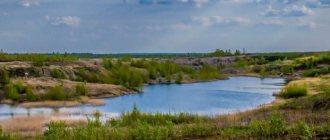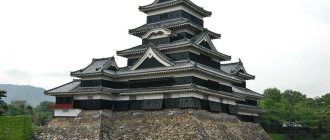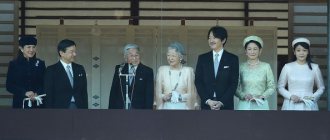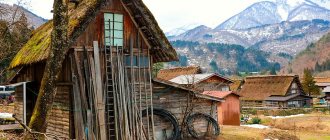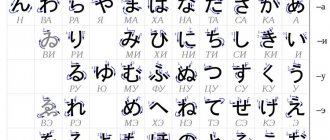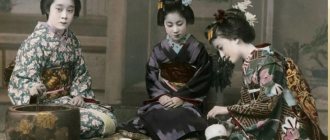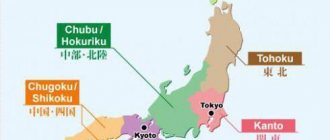The Japanese believe that everyone has their own ikigai. This is one of the main concepts of their philosophy of health and longevity, which can be deciphered as “a sense of one’s own purpose.” In December, Alpina Publisher will publish the book “Ikigai: Japanese Secrets to a Long and Happy Life.” Researcher Hector Garcia (Kirai) and writer Francesc Miralles studied this phenomenon and visited the centenarian village of Ohimi on the island of Okinawa, whose youngest resident is 83 years old. “Theories and Practices” publishes a fragment about their trip.
“Ikigai: Japanese Secrets to a Long and Happy Life”
To get to Ohimi, we had to fly three hours from Tokyo to Naha, the capital of Okinawa. A few months earlier, we contacted the administration of the “centennial village” and explained that we wanted to interview the elders in the community. After long negotiations, with the help of two officials, we managed to rent a house near Ohimi.
A year after the start of the project, we were ready to lift the veil of secrecy and meet the oldest people in the world. We immediately realized that time stood still in Ohimi, as if everyone was living in an endless present.
A little history
The Japanese islands began to be populated by people back in the Paleolithic era. Initially, the inhabitants here were engaged in hunting and gathering and led the first settlements in Japan arose in the Jomon era - around the 12th millennium BC. At that time, the climate on the islands began to change due to the formation of the Tsushima warm current. The inhabitants of Japan switched to a sedentary lifestyle. In addition to hunting and gathering, the population also began to engage in fishing and animal husbandry.
Today, Japanese villages are often home to many people. But it was not always so. Initially the number of inhabitants on the islands was very small. However, in the 13th millennium BC. e. People from the Korean Peninsula began to actively migrate here. It was they who brought the technologies of rice cultivation and silk weaving to Ancient Japan, which are still actively used today. The population of the islands increased by 3-4 times in those days. And of course, many new settlements arose in ancient Japan. At the same time, the villages of migrants were much larger than those of local residents - up to 1.5 thousand people. The main type of housing in Japanese settlements in those days were ordinary dugouts.
From the 4th century The process of establishing statehood began in Japan. During this period, the culture of the islands was greatly influenced by Korea. In the country then called Nihon, the first capital of Nara was founded. Of course, Korean villages were also actively built in those days. They were located mainly around the capital, as well as in the valley of the Asuka River. Dugouts in settlements at that time began to gradually be replaced by ordinary houses.
The fabulous Japanese village of Iyashi no Sato - an open-air museum
The next point of the trip was an open-air museum - the unusual Japanese village of Iyashi no Sato. Our path lay towards Mount Fujisan. A 3-hour journey lay ahead, so when we went to the store we decided to grab a bento to have a snack on the road. Having looked at what they were selling, as usual, I settled on a multi-layer sandwich - tasty, soft, you won’t get dirty on the road and you don’t need any forks or spoons.
Goodbye Matsumoto, I'm off to new adventures!
On a cheerful toy train we rushed to the Five Lakes area, located near Mount Fuji, in the village of Fujikawaguchiko, Yamanashi Prefecture.
It was here that I was struck by how the Japanese can carefully and quietly help foreigners navigate; I wrote about it here.
The cozy ryokan where we planned to stay was located in the mountains, where we had to get there by small excursion buses. Arriving at the station, it was immediately clear that this was a popular tourist route, there were a lot of people and mostly foreigners.
Station employees approached the tourists, asked where they were going and took them in queues, to the “red line” or to the “green line” and left until the bus arrived. We were assigned to the red one, but after looking at the map we decided that our hotel was located on the green one. We moved to another line.
The employee came up to us again and transferred us back, explaining that the bus we had chosen would not stop where we needed it. The persistence in providing quality service was amazing; anyone else would have thought “go wherever you want.”
Having left our things in a ryokan with a Japanese-style room, we rushed before it got dark to look at the open-air museum village of Iyashi no Sato (西湖いやしの/Saiko yashi no). I had seen it in pictures before and it reminded me of the unique Japanese village of Shirakawa-go, although eyewitnesses say that these are completely different things.
To get to the village you need to use transport; we rode a bus, going up a winding mountain road. There is free parking at the top, the entrance fee is 350 yen and the bus ticket costs 300 yen.
Tourists are immediately greeted by a number of souvenir shops and stores. Having passed the first “advertising block”, a spectacle opened up in front of me, as they say, of medieval Japan.
Iyashi no Sato is a real village that was destroyed by a landslide during the 1964 typhoon. In one of the museums you can learn the history of the village. This was once the most beautiful village in this area. Surrounded by famous and attractive places such as Mount Fuji, Aokigahara Forest and Saiko Lake.
20 houses from medieval Japan have been restored to their original appearance, made of wood and covered with rice straw. Now these beautiful houses house museums, souvenir shops, and guest houses.
In one of these houses you can take a master class on making ceramics, take part yourself and even make a souvenir as a souvenir. Children and women willingly take part in such entertainment.
There is also a store here where you can see handmade paper and more. During the course of half a day, those interested can be shown the process of making paper; there are shorter sessions from 30 to 90 minutes.
Another fun activity can be cooking Japanese soba (buckwheat noodles).
Exhibitions of paintings are held on the territory of the complex.
We did not attend all these events, but admired the external beauty of the complex. Entering one of the houses we saw an artistic composition of an elderly married couple. The owners themselves were here and willingly showed the few tourists their creativity: paintings, postcards, woodwork.
Here, for 500 yen, you can rent samurai clothes or a kimono and take a memorable photo with Fuji in the background - Chinese tourists (or maybe not Chinese) happily dress in national costumes and walk around everywhere.
We were in Iyashi no Sato in the afternoon and there were few people, which frankly made me happy, but reading the reviews I realized that many people were talking about the small number of visitors in this place. Which is very surprising considering the unusualness and beauty of this place.
I really liked the beautiful autumn landscape surrounding the unique museum. I can imagine what aesthetic pleasure the residents of this village received, especially considering the national characteristic of the Japanese - the love of beauty and contemplation. Having worked from morning to evening, it must be nice to go out onto the porch and watch the sunset and Fuji in the evening rays, and no less beautiful in the morning. (I dreamed this a little)
Iyashi no Sato is interesting for its originality and the fact that it is light and spacious. You can leisurely stroll through the streets of a medieval Japanese village, watch how slowly and beautifully the water flows in a water mill, how fish swim in the river.
And if you're lucky, you'll find a convenient place to admire Fuji. That evening the weather was clear and, surprisingly, the mountain was clearly visible. I wanted to look at her again and again. Here he is, the symbol of Japan and the favorite of all Japanese.
I also saw Fujisan, far away, but still...
It was already getting dark (if you don’t visit various museums, then a quick tour of the historical village will take on average 2-2.5 hours), having jumped on the penultimate bus run, we decided to get off along the way and admire the lake. We hoped that Mount Fuji would be visible from here, but we miscalculated and Fuji was out of reach. It was dark and deserted, with empty camping huts nearby. Not impressed, most likely this is a place for fishing. After wandering around the outskirts of the forest, we began to wait for the regular bus to return to the hotel.
When we returned, we walked around the small village looking for “non-Japanese food,” since not everyone liked Japanese food. In principle, I didn’t care. Having found a small establishment, we ordered dinner. Dressed up (something in the spirit of Halloween), very cheerful Japanese began to show up at the cafe. Not young people, of different ages with children. They went into a room with doors and, having ordered a lot of food and drink, closed in their noisy, unceremonious company. So I saw that the Japanese can be not only modest and quiet, but also very liberated, but they behaved this way in their company, hidden from prying eyes.
our dinner
Wars
Later, by the 8th century, Korea's influence gradually began to fade away and the Japanese rulers turned their attention to China. At this time, a new capital was built on the islands, in which up to 200 thousand people lived. By this time, the formation of the Japanese nation itself had been completed. In the 8th century, the emperors of the country began to gradually conquer the forested territories of the aborigines, some of whom still led an almost primitive way of life. In order to strengthen their positions in these regions, the rulers forcibly resettled residents of the central part of the country here. And of course, new settlements began to emerge in these places - villages and fortresses.
Ancient way of life
The type of activity of the Japanese has always directly depended on their place of residence. Thus, residents of coastal villages were engaged in fishing, evaporating salt, and collecting shellfish. During the conflicts with the aborigines, the population of forested areas was subject to military service. Residents of villages located in the mountains were often engaged in breeding silkworms, making fabrics, and in some cases, producing gunpowder. On the plains, settlers most often grew rice. Blacksmithing and pottery were also practiced in Japanese villages. Between settlements of different “specializations” at the intersection of trade routes, among other things, market squares were formed.
The rhythm of life in Japanese villages was almost always calm and measured. The villagers coexisted in complete harmony with nature. Initially, the Japanese lived in communities in fairly large settlements. Later, of course, detached estates of the nobility began to appear in the country, surrounded by a fence.
LiveInternetLiveInternet
Quote from tantana
Read in full In your quotation book or community!
The villages of Shirakawa-go and Gokayama
The village of Shirakawa-go and the gassho-zukuri house museum. The names of the houses come from the steep thatched roofs that look like hands folded in prayer (gassho). In 1976, Shirakawa-go was declared a protected architectural area of Japan, and in 1995 it was recognized as a world heritage site under the protection of UNESCO as “an outstanding example of a traditional way of life, perfectly adapted to the environment and local social and economic conditions.”
The historic villages of Gokayama (Toyama Prefecture) and Shirakawa-go (Gifu Prefecture) are located in a remote mountainous region of Honshu Island, which was cut off from the rest of Japan for long periods of time during the winter.
These are not exactly villages in our understanding. It is like a district that includes other subdistricts. Accordingly, on the territory of such a village there may be settlements with their own name (so to speak, “sub-villages”), or there may simply be individual houses along the road.
Most often, when tourists say that they have visited Shirakawa-go, they mean the “sub-village” of Ogimachi, which has the highest concentration of what people come here for - houses in the gassho-zukuri style.
Snowy winters (up to 4 meters from December to March) and rainy summers place special demands on architecture: a steep roof must withstand heavy snowfalls and be resistant to moisture. The slope of the gassho roof is about 60° (usually no more than 45°).
Local houses were built without a single nail. All beams are fastened with hemp rope and walnut rods. But despite this, the houses here are very stable. They can handle any bad weather. Some of the huts that people still live in are over 100 years old.
The main occupation of the local residents was silkworm breeding, so the upper floors of the dwellings are skillfully adapted for the needs of silkworming. These dwellings are unique; you will not find anything similar in Japan.
It is not known when such houses began to be built. It is not even really known when people entered this region. The first chronicle mentions date back to the 12th century. Only in the XIII century. Buddhism penetrated here.
Residents of the village of Shirakawa-Go trace their ancestry to the Taira clan, which is a subsidiary branch of the imperial family. The population lives in a kind of commune: they work together, repair their homes together, and help each other in everyday affairs. The main occupation of local residents for 250 years has been raising silkworms and producing gunpowder. But tourism has now become the main source of income.
The feudal wars of the Sengoku period, however, did not bypass Shirakawa. In the 15th century in Ogimachi they even built a samurai castle; in its place there is now an observation deck. In the 17th century The territory was taken over by the Tokugawa shogunate.
At this time, a certain economic boom began in the region, associated with the start of silkworm breeding. Before this, almost the only source of income was timber, which is still abundant here: 98% of the territory is covered with forest. Because of this, by the way, there is almost nowhere to grow rice here; there is barely enough for food. Local carpenters were highly valued and were hired from different places to build first samurai castles, then palaces and offices for the shogun and his entourage.
We lived, it must be said, very poorly and almost in complete isolation. This was very good for gassho-zukuri houses, because... People didn’t have money for new construction, so they had to keep what they had afloat. Thus, houses that are 200 years old have reached us - an extremely rare occurrence for Japan.
At the end of the 19th century. the authorities finally paved a road from south to north, which went straight along Ogimachi. The way of life began to change, many began to build ordinary houses covered with tiles along the highway. After World War II, economic growth began, people began to unanimously demolish gassho-zukuri, which were not very comfortable for living and difficult to maintain. Moreover, the massive construction of dams on the Syo River flowing here has begun. The government became puzzled by the preservation of gassho-zukuri, and they began to be evacuated from areas designated for flooding to Ogimachi. With the first nine such houses, the Gassho-zukuri Minka-en open-air museum began in 1972.
Ogimachi is not the only gassho-zukuri village. About 15-20 km north of here is the historical region of Gokayama. Historical - because it does not exist on the modern administrative map of Japan, just like Shirakawa-go. These are now the villages of Taira, Kamitaira and Toga in Toyama Prefecture. The villages are located halfway between Tokyo and Kyoto. They are a UNESCO world cultural heritage.
Is it worth a visit
Residents of the villages of the Land of the Rising Sun, judging by the reviews of tourists, are very friendly. They also treat well foreigners who come to visit them. Of course, tourists don’t visit remote Japanese villages too often. But some settlements that have existed since ancient times still attract the interest of foreigners. In such Japanese villages, among other things, the tourism business is well developed.
Judging by the reviews of travelers, modern country settlements in the Land of the Rising Sun look very beautiful and cozy. In Japanese villages, flower beds bloom everywhere, spectacular shrubs grow, and rock gardens are laid out.
How houses were built in the old days
One of the peculiarities of Japan, unfortunately, is frequent earthquakes. Therefore, since ancient times, a special technology for building houses has been used in this country. In Japanese villages, only frame residential buildings have always been erected. The walls of such buildings did not bear any load. The strength of the house was given by a wooden frame, assembled without the use of nails - by fastening with ropes and rods.
The climate in Japan is quite mild. Therefore, the facades of houses in this country were not insulated in ancient times. Moreover, in such buildings there was always only one main wall. Between the sheathings it was stuffed with grass, sawdust, etc. All the other walls were just thin wooden sliding doors. They closed at night and in cold weather. On warm days, such doors were moved apart and the residents of the house were able to coexist in complete harmony with the surrounding nature.
In ancient times, floors in Japanese village houses were always raised high above ground level. The fact is that the Japanese traditionally sleep not on beds, but simply on special mattresses - futons. Spending the night in this way on a floor located near the ground would, of course, be cold and damp.
There are several styles of Japanese ancient buildings. However, all houses in this country share the following architectural features:
- large cornices, the size of which can reach a meter;
sometimes curved corners of the slopes;
asceticism of the exterior.
The facades of Japanese houses were almost never decorated with anything. The roofs of such houses were covered with grass and straw.
Modern style
Today in Japanese villages (you can clearly see this in the photo) only frame houses are still built. After all, earthquakes happen quite often in this country even today. Sometimes in villages in Japan you can see frames built using Canadian technology, which has become widespread in the world. But most often houses here are built according to local methods that have been developed over centuries.
The walls of modern Japanese houses, of course, are lined with fairly strong and reliable materials. But at the same time, spacious, bright terraces are always built next to such buildings. The eaves of Japanese houses are still long.
Floors in residential buildings in villages are not raised too high these days. However, they are not being developed on the ground either. When pouring slab foundations, the Japanese provide, among other things, special ribs, the height of which can reach 50 cm. Indeed, even today, in village houses, many Japanese still sleep on mattresses.
Gods of Okinawa
The ancient religion of the Okinawan monarchs is called "Ryukushinto", which means "Way of the Gods". It combines elements of Chinese Taoism, Confucianism, Buddhism and Shintoism, as well as shamanism and animism.
According to the faith of our ancestors, the world is inhabited by an infinite number of different spirits - spirits of the house, forest, trees, mountains... It is very important to please these spirits by performing rituals, organizing holidays, and also by honoring holy places. In Okinawa, many forests are considered sacred. There are two main types of temples - utaki and ugandzu. For example, near the waterfall we go into ugandza - a small open-air temple, there are incense and coins there. Utaki is a stone building where people come to pray; This is where spirits are believed to gather.
Okinawan religion states (and this is where it diverges from Shintoism) that women are spiritually superior to men. Because of this, it is women in Okinawa who are vested with spiritual power. Yuta are female mediums who are chosen by the village to communicate with the spirits.
Also, an important place in this religion (and in Japanese culture in general) is given to the veneration of ancestors - in Okinawa, in the house of the eldest in the family, there is usually a small altar where sacrifices are made to the ancestors and they pray for them.
Mabui
Mabui is the essence of every person, his soul and source of vital energy. Mabui is an immortal substance that makes each of us unique. Sometimes the mabui of a deceased person takes up residence in someone living - and then a special ritual is needed to free it. It is usually performed if someone, especially a young person, dies suddenly and the mabui does not want to go to the world of the dead. Mabui can also be passed on to another person. For example, if a grandmother leaves a ring as an inheritance to her granddaughter, she thereby transfers part of her mabui to her. It can also be transmitted by photographs.
Communications
More than 80% of Japan's territory is mountainous. And laying gas pipelines on islands is often simply impossible. Therefore, in most cases, houses in villages in Japan are not gasified. But of course, Japanese housewives in such settlements do not cook in ovens at all. Blue fuel in villages is obtained from cylinders.
Since the climate in Japan is not too cold, there is no central heating in houses here. During the cold season, residents of local villages heat their premises using oil or infrared heaters.
The most beautiful Japanese villages
In the Land of the Rising Sun, as already mentioned, several ancient villages have been preserved, worthy of the attention of tourists. For example, very often antiquity lovers visit Japanese villages called Shirakawa and Gokayama. These settlements have existed in Japan for several centuries. In winter, the roads leading to them are covered with snow, and they find themselves completely isolated from civilization.
Many residents of these villages are engaged in silk weaving and cultivation of rice and vegetables. But the Japanese living in these settlements receive the bulk of their income from the tourism business. There are cafes, souvenir shops, and shops of various specializations here. Some residents of these Japanese mountain villages also rent out rooms to tourists.
The settlements of Shirakawa and Gokayama are famous, among other things, for the fact that houses built in the gassho-zukuri style are still preserved here. The peculiarity of these frame buildings are low walls and a very high, usually gable roof, under which there are another one or two floors. The houses in these settlements are covered, as in ancient times, with grass and straw.
Gassho-zukuri houses in Shirakawa and Gokayama
For a long time, residents of the villages of Shirakawa and Gokayama have been breeding silkworms. They built houses with steep triangular roofs, the upper floors of which were used for silk weaving. The houses were called "gassho-zukuri".
Gokayama Village in Japan
(public domain)
The main feature of such houses is the high triangular thatched roof. Buildings built in the gassho-zukuri style resemble hands folded in prayer. Thatched roofs have a sharp slope, allowing snow to easily “slide” to the ground. Thus, houses can withstand the heaviest snowfalls. Thatched roofs need to be replaced every 15-20 years.
Another interesting feature is that houses were built without the use of nails.
Photo by Wikimedia.org
Gassho-zukuri House in Shirakawa Village
Houses in Gokayama and Shirakawa villages have three or four floors, with the roof starting at the second floor level. Traditional gassho-zukuri houses were able to accommodate not only residential, but also utility rooms. In particular, the first floors of the house were usually residential, but the upper floors were equipped for the needs of sericulture. Sometimes premises for the production of saltpeter were set up on the ground floor of the gassho house.
Photo by tsuda Flickr
Haba House in Gokayama. Built in the 17th century

